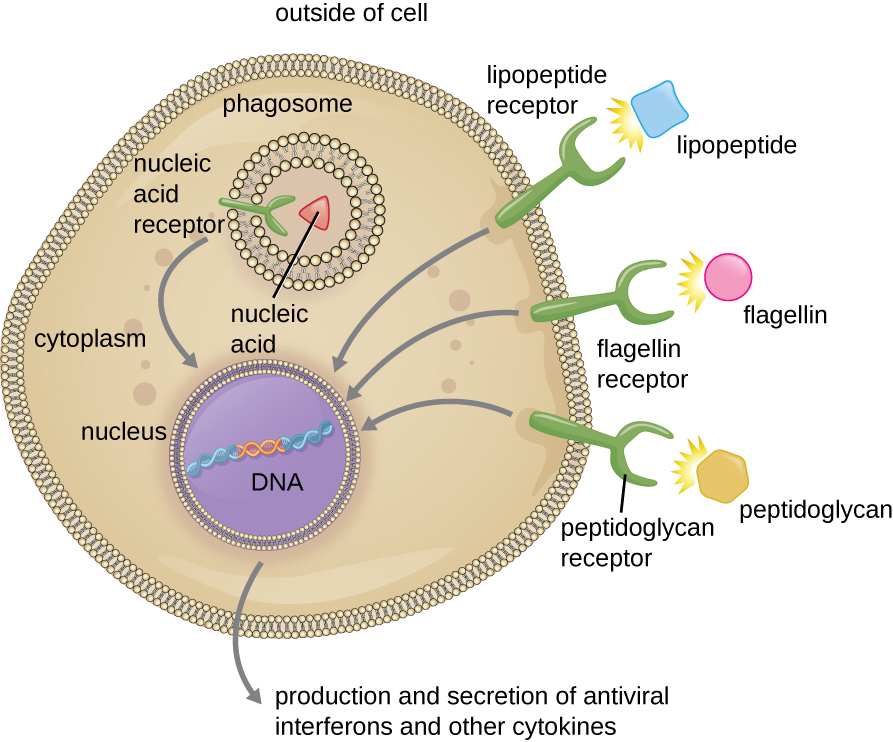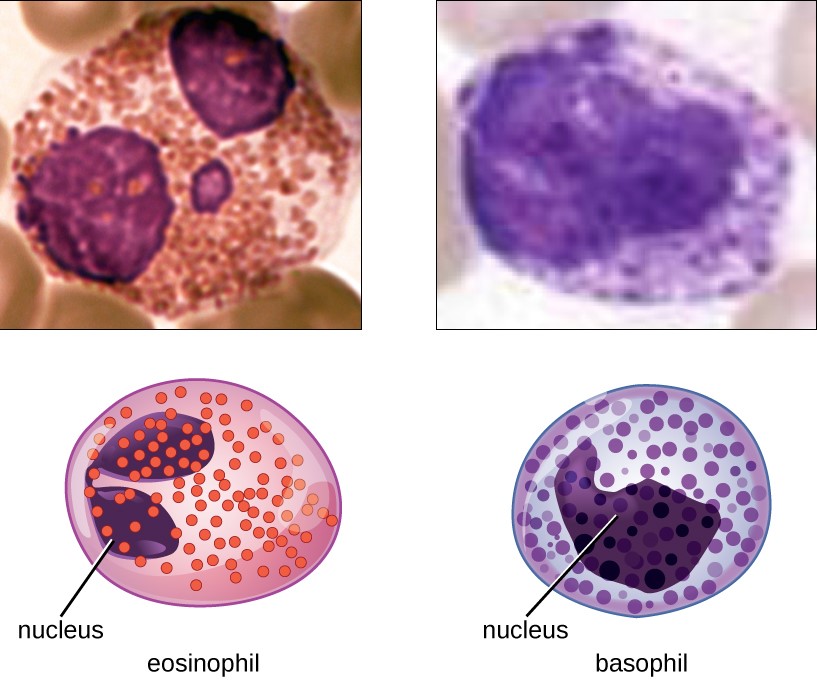Playlist
Show Playlist
Hide Playlist
Innate Immunity: The Mast Cells
-
Slides Innate Immunity.pdf
-
Reference List Pathology.pdf
-
Download Lecture Overview
00:01 Welcome back. 00:03 As part of our series of talks about the immune system, we're going to delve a little bit deeper into elements of innate immunity, and talk about some of the details because they're important, not only to recognise about how these various components work as part of innate immunity, but also to understand potential therapeutic targets. 00:22 So this is all going to be about innate immunity. 00:24 And we'll talk about a few cells and we'll talk about complement. 00:28 First up are the mast cells. 00:30 So these are derived from bone marrow precursors that circulate and then get into the tissue and kind of live in the tissue for the lifetime of the host. 00:39 You can think of them as sentinels that are sitting out there in the tissue waiting to be stimulated to say, hey, something's happened, we need to respond. 00:49 So, what I'm showing you here now is that mast cell, and it has on its surface, and I've specific receptor for immunoglobulin E antibody, so, this is the FC epsilon receptor, and it binds immunoglobulin E. 01:07 So, some of you will already recognise that immunoglobulin E is part of allergies. 01:11 That's exactly right. 01:12 IGE will be a major element that will drive the allergic responses, everything from asthma, pollen, dander, allergies, or anaphylaxis. 01:25 So, mast cells are pre loaded with the IGE antibodies with different specificities. 01:33 And when they recognise a polyvalent antigen, such as you're seeing there. 01:37 Polyvalent means the same antigen along a long string of backbone protein, such as would be cockroach dander or cockroach protein, or dusts or pollens. 01:50 Then the IGE, already pre loaded onto the surface of the mast cell now triggers mast cell to degranulate. 01:57 And you can see the granules being released into that area. 02:00 That's going to be the major driving force for allergies, anaphylaxis, asthma. 02:07 But there are other ways that we can activate mast cells. 02:10 So we can do direct activation. 02:12 It turns out that certain protein fragments coming from the complement activation cascade as we'll talk about at the end of this little series here, can activate mast cells directly. 02:25 Polly basic compounds, these are things that are present for example, in bee venom, can activate mast cells directly, certain neuro peptides, even the cold. 02:34 So those of you who go out into the stone frolic in the snow, but your nose runs like a faucet. 02:39 That's because your mast cells are degranulating, releasing their compounds into the adjacent tissue and are causing increased vascular permeability and increased vasodilation. 02:50 So that's why your nose runs like a faucet, you just have wisi mast cells that cannot hold their granules in when you can make them cold. 02:58 So you can have specific activation through IGE and a variety of other pathways to activate the mast cells. 03:04 After all, we want them to be good sentinels detecting potential danger in the local environment. 03:10 So what happens when mast cells are activated? So they release their mediators. 03:16 There's an early a very early release that includes histamine and serotonin. 03:21 That histamine and serotonin will cause vasodilation and increased vascular permeability. 03:26 So that's one set of mediators released by the sentinel mast cells. 03:32 They will also make leukotrienes they will make arachidonic acid metabolites that can have effects on airway tone, and can cause bronchoconstriction. 03:43 So those of you who suffer from asthma or know about asthma, that being driven by the mast cells, it's because it's causing the airways to constrict and become very tight. 03:52 So the, the poor person who's got asthma has got Airways, that is if they are trying to breathe through very tiny little straws. 04:03 And one of the other mediators are a number of the other mediators are going to cause inflammatory cell recruitment and their activation. 04:12 So there are cytokines and chemokine being elaborated over a period of time by the mast cells that will be also important for recruitment and activation of both innate and adaptive immune elements. 04:25 So these are very good sentinels out in the tissue and will do a number of things that are very important to the early inflammatory response. 04:33 That's the mast cell.
About the Lecture
The lecture Innate Immunity: The Mast Cells by Richard Mitchell, MD, PhD is from the course Immune-mediated Diseases.
Included Quiz Questions
Where are mature mast cells mostly located?
- In the tissues
- In the blood
- In the bone marrow
- On epithelial surfaces
- Attached to T cells
What are the effects of histamine and serotonin released by mast cell degranulation?
- They lead to vasodilation and increased vascular permeability.
- They only decrease vascular permeability.
- They lead to vasoconstriction and decreased vascular permeability.
- They lead to inflammatory cell recruitment and activation.
- They cause bronchodilation.
Customer reviews
5,0 of 5 stars
| 5 Stars |
|
5 |
| 4 Stars |
|
0 |
| 3 Stars |
|
0 |
| 2 Stars |
|
0 |
| 1 Star |
|
0 |





